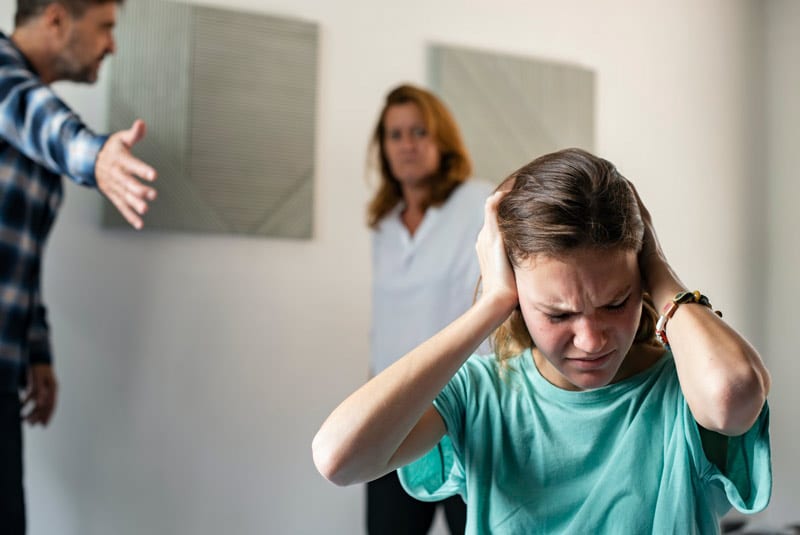Many parents send a child to residential treatment centers because they want their kid to change. More often than not, the family system is what needs to change, not necessarily just the individual. Residential treatment centers facilitate that growth in the family, as well as the individual.
What is residential treatment?
Residential treatment is inpatient therapy designed to help individuals grow emotionally and, in the process, make behavioral changes. Most residential treatment centers house their clients for anywhere from 6-12 months. Residential treatment is a great option for families who feel that things are getting out of control and need some consistency in their lives.
What drives families to residential treatment?
Usually, families are driven to consider residential treatment when their child struggles with some sort of addiction, becomes withdrawn from the family, retreats to technology to an unhealthy degree, has trauma-related issues, exhibits depressive symptoms, shows suicidal ideation, or many other possible reasons.
Teenagers begin to exhibit these symptoms in part because the adolesecent years are quite hectic due to many changes that are happening in the teen’s life. During adolescence, identity begins to be formed as the teens strive to establish who they are (Psychology Today). During this time, many developmental changes occur in the brain as well as more concrete thinking patterns (Cognitive Development). Teenagers learn how to become adults as they grow through adolescence by taking on more responsibility and learning how to deal with it.
As a result of all these changes, teens struggle with regulating their emotions, and sometimes parents struggle to help them manage these emotions. Parents often feel shame and guilt about not being able to help their kids effectively. However, the reality is that parents are very capable; they just need help sometimes.
So what can residential treatment do for the individual and the family?
Teens who struggle to manage their emotions effectively must be taught how to do so. Residential treatment provides individuals with the necessary skills to live their lives in a healthy way. In residential treatment, teens are taught which coping skills are unhealthy and which are healthy. They then learn how to avoid the negative ones and lean towards the healthy ones. While teens work on learning those skills, parents are helped to understand the different nuances of adolescence and how to guide their children best.
This concept can be explained through the toolbox analogy. Families come to residential treatment with maybe one or two tools in their box. When they leave, they leave with their toolboxes full, so they can fix problems that arise.
Residential treatment through a systemic perspective
Teens sent to residential treatment programs are usually believed to be the problem. However, in most cases, the problem is actually the existing family system. Residential treatment allows for the “identified patient” to get away from the family system, which opens the door for the family system’s negative patterns to be analyzed without those patterns being actively played out. In essence, it gives the individual and the family space to look at themselves without the current dysfunctional patterns pulling them back in.
The family needs to identify the negative patterns and change them as the individual teen makes individual changes. If the system does not change along with the individual, then the chances of relapse will be a lot higher. However, if the family system changes and the changed individual comes home to a healthy system, the changes are more likely to last.
This concept can be explained by the golf analogy. If you hit a ball into the mud, you can pick it up and clean it before placing it back where it was. However, the ball is going to be placed back into the mud, causing it to become dirty again. If an individual is taken out of an unhealthy system and changes but is then put back into the same family system, it won’t be long before the old patterns come back.
Effective treatment involves helping the parents understand how the family system needs to change in order to help their child and their family. The parents can do this with minimal guidance. Sometimes they just need the space to do it because they get so caught up in everything that is going on.
Life after treatment when families are given the necessary tools
If residential treatment is approached from a “fix the individual” angle, the changes, no matter how great they may be, aren’t as likely to last. When a new system is developed it gives the individual and the family an opportunity to create new rules and patterns. Hopefully, healthy ones this time.
After treatment, teens are given the necessary tools to have control over their emotions and set themselves up for success, and parents are given the tools that they need to fix problems that arise in the family with minimal external help.
The combination of having the right tools and going through systemic change sets the family up for success. In this new system and with these tools, healthy relationships can be built and maintained, and families can enjoy being with one another again.
About the Author: Ashcreek Academy is a residential treatment center for boys located in Southern Utah. Ashcreek provides proven therapeutic care for the individuals that come into their care and strives to help the family heal as a system.
References
Cognitive Development: Thinking On New Levels. Center for Parent and Teen Communication. Accessed Oct. 20, 2020. https://parentandteen.com/adolescent-cognitive-development/
Adolescence. Psychology Today. Accessed Oct. 20, 2020. https://www.psychologytoday.com/us/basics/adolescence
Image by www.rawpixel.com
The opinions and views expressed in any guest blog post do not necessarily reflect those of www.rtor.org or its sponsor, Laurel House, Inc. The author and www.rtor.org have no affiliations with any products or services mentioned in the article or linked to therein. Guest Authors may have affiliations to products mentioned or linked to in their author bios only.
Recommended for You
- Why Most Americans Can’t Relax at Home – And What It’s Doing to Their Mental Health - November 28, 2025
- How OCD Took Over My Life (and How I Took It Back) - November 24, 2025
- Does Marriage Counseling Work? It Depends on Your Commitment - November 20, 2025





